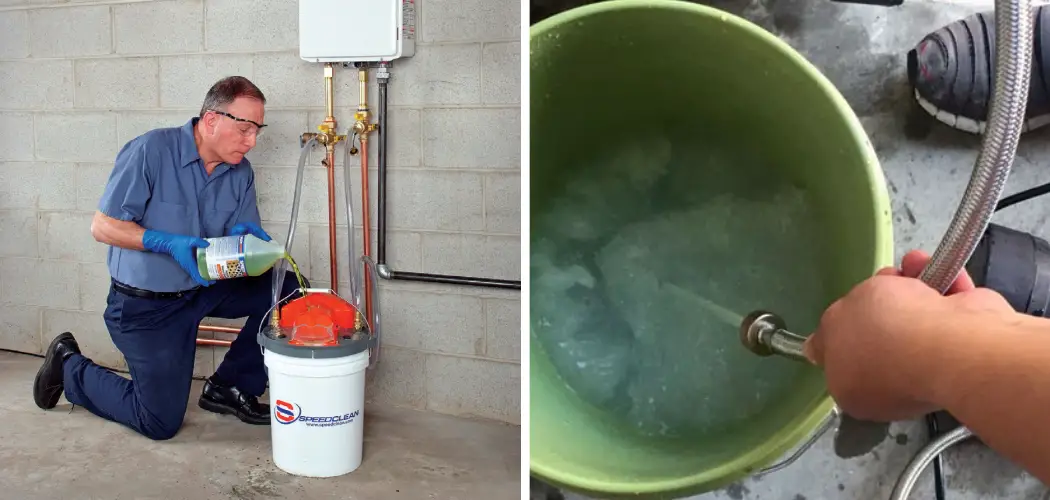Flushing your tankless water heater with vinegar is an important part of maintenance that helps to keep it running efficiently. Over time, the scale can build up in the pipes and other components of the heater, reducing its efficiency and lifespan. Flushing it regularly with vinegar can help to reduce this buildup and ensure that your system lasts for as long as possible. Vinegar is a natural, safe, and inexpensive way to flush the heater and remove the scale that’s built up in the system.
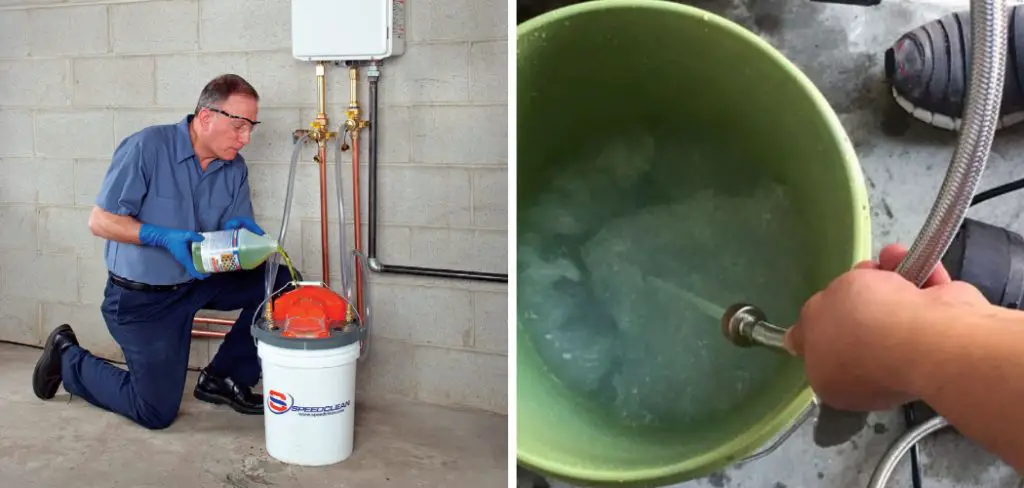
Using vinegar to flush a tankless water heater has numerous advantages. Firstly, it is a natural and safe way of cleaning and can be used on any tankless water heater without damaging the appliance or its components. Vinegar is also an effective remedy for eliminating limescale from the inside of the unit, helping to keep your water heater running efficiently. In this blog post, You will learn in detail how to flush a tankless water heater with vinegar.
Step-by-Step Processes for How to Flush a Tankless Water Heater With Vinegar
Step 1: Inspect the Water Heater
Before flushing the water heater, inspect it for any leaks or signs of corrosion. If you notice any signs of damage, contact a professional to assess and repair the issue before proceeding with the flush. Go to your tankless water heater’s main shut-off valve and turn it off. Doing this will ensure no water flows through the unit while you are flushing it.
Step 2: Drain The Tankless Water Heater
Connect a hose to the drain valve at the bottom of your tankless water heater and run it to a safe location outdoors or into a bucket to collect any draining water. Turn the drain valve clockwise to open it, and allow the water to drain completely. Once all of the water is drained from your tankless water heater, prepare a vinegar solution by mixing one part white distilled vinegar with three parts water.
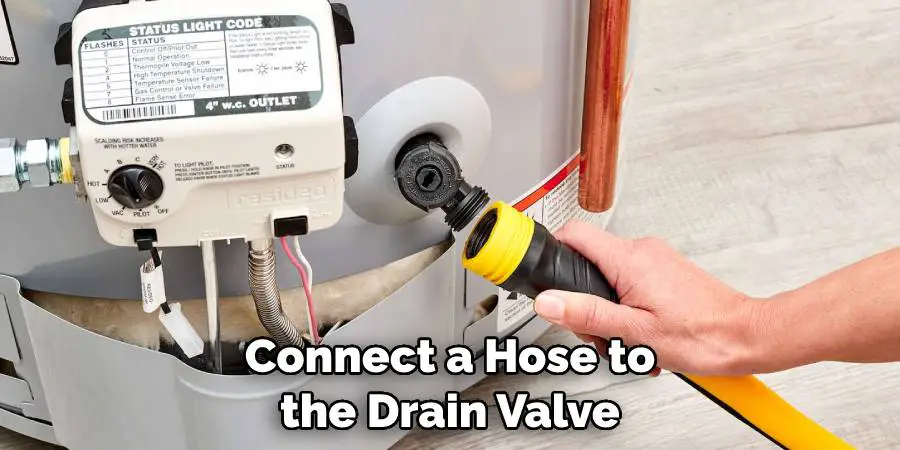
Step 3: Begin Refilling With Vinegar Solution
Using a hose, refill the tankless water heater with the vinegar solution. Make sure to fill it to its maximum capacity, then close the drain valve tightly and turn on the main shut-off valve. Let your hot water faucet run until you can smell the vinegar. Doing this will ensure that all of the vinegar solutions is running through your tankless water heater.
Step 4: Let It Sit
Once you can smell the vinegar, turn off the faucet and let the vinegar sit in your tankless water heater for two to three hours. Doing this will allow it to dissolve any calcium or lime deposits and other impurities. Return to the tankless water heater and turn on the hot water faucet until you no longer smell the vinegar. This will flush out any remaining debris in the unit and all of the vinegar solution.
Step 5: Refill The Tankless Water Heater
Once the vinegar smell is gone, turn off the faucet and refill the tankless water heater with fresh water. After the tankless water heater is refilled with fresh water, turn on the main shut-off valve and let the water heater run for several minutes. This will ensure that all vinegar residues are gone from the unit and that it is running properly.
By following these steps, you can easily flush your tankless water heater with vinegar and ensure that it is running in optimal condition. Doing this regularly will help prevent any build-up of calcium or lime deposits and other impurities, as well as keep your unit running at its best.
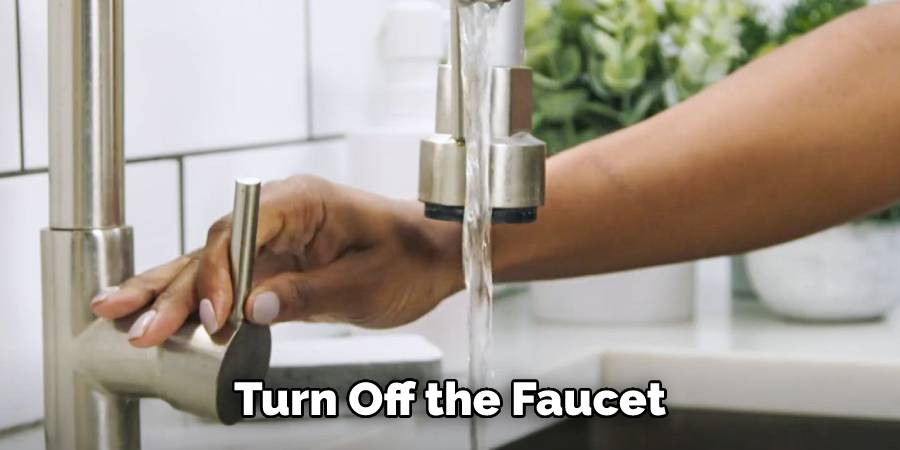
Tips for How to Flush a Tankless Water Heater With Vinegar
- Ensure the gas and electricity to your tankless water heater are turned off before flushing it with vinegar.
- Wear thick protective gloves when handling the vinegar, as contact with skin can cause a burning sensation or other severe reactions depending on the type of vinegar used.
- When handling the vinegar, always have eye protection, such as goggles or a face shield.
- Be sure to open a window or door in the area for adequate ventilation during the flushing and draining of the tankless water heater.
- Before filling the tank with vinegar, make sure to check all parts of the tankless water heater for any leaks that may need fixing first.
- When flushing, be sure to turn off the water supply and wait a few minutes for any remaining hot water in the tank to cool down before pouring in the vinegar solution.
- Before draining the vinegar from the tankless water heater, flush it with cold water first to ensure all traces of vinegar have been removed from the tank.
- Consider hiring a professional to help with flushing your tankless water heater if you feel uncomfortable doing it yourself.
This task ensures that the job is done safely and correctly, avoiding any potential accidental damage or injury caused by improper handling of the vinegar solution or other elements of your tankless water heater.
How Long Should Vinegar Remain in the System Before Flushing?
Vinegar should remain in the tankless water heater for at least one hour for optimal results. This allows enough time for the vinegar to work its way through the system and dissolve any buildup or sediment that may be present. Once the hour is up, carefully turn off all power sources to the water heater, such as gas or electric lines. Then, use a garden hose to flush the system out of all traces of vinegar. Make sure to run the water until it is clear and free of any vinegary taste or smell.
Once the flushing is complete, turn the power back on to the tankless water heater and allow it to fill with clean water again. This process should be done at least once a year to ensure that the water heater is free of buildup and sediment. Doing so will help extend its life and keep it working efficiently for years to come. Flushing your tankless water heater with vinegar is an easy way to keep it clean and efficient. The process can be done quickly and doesn’t require any special tools or expertise. With a little bit of vinegar and some time, your water heater will be up and running better than ever before.
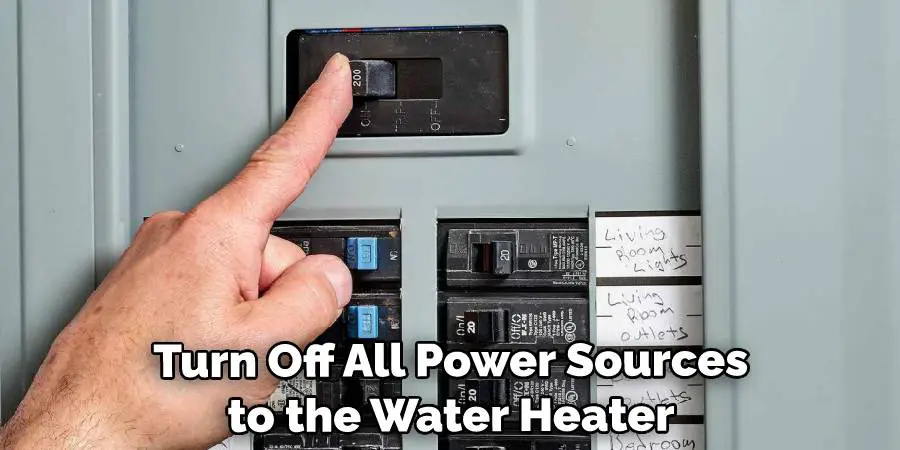
What Are the Risks or Potential Side Effects of Using Vinegar to Flush a Tankless Water Heater?
While using vinegar as a flushing agent for your tankless water heater is generally safe, you should be aware of some potential risks or side effects. First, vinegar can cause corrosion over time if it is not completely flushed out of the system. This could lead to damage to components within the water heater and reduce the lifespan of your system. Second, vinegar is highly acidic and can cause skin irritation if it comes into contact with your or anyone else’s body. Make sure to wear protective clothing, such as gloves and safety glasses, when handling the vinegar solution and during the flushing process.
Finally, if you are unsure which vinegar to use, you should always err on the side of caution and stick with white distilled vinegar. This will ensure that your water heater is not exposed to any other potentially harmful chemicals or additives. By taking these necessary precautions when flushing your tankless water heater with vinegar, you can help ensure that the process is done safely and that your water heater will remain in good working condition for years.
What Should Other Maintenance Steps Be Taken to Maintain a Tankless Water Heater?
In addition to flushing the tankless water heater with vinegar, there are other maintenance steps that should be taken to maintain the water heater. These include:
- Checking and Replacing Filters as Needed: Tankless water heaters use filters to keep debris from clogging up the coils or lines. It’s important to check and replace the filters as needed, typically every few months.
- Descaling Regularly: Scale can build up on the water heater’s heating elements over time, reducing its efficiency and shortening its lifespan. The best way to prevent this is by descaling it regularly with a cleaning solution specifically designed for tankless water heaters.
- Checking for Air and Gas Leaks: If you have a gas-fired tankless water heater, it’s important to check for any leaks in the air or natural gas lines on a regular basis. This can be done by applying a soapy solution around the suspected leaky area.
- Cleaning the Exterior: Cleaning the exterior of the water heater is also important for maintaining its efficiency. This includes cleaning any debris around the unit and wiping the outside with a cloth or vacuum cleaner.
By following these maintenance steps and flushing your tankless water heater with vinegar, you can ensure that it will operate efficiently and last longer.
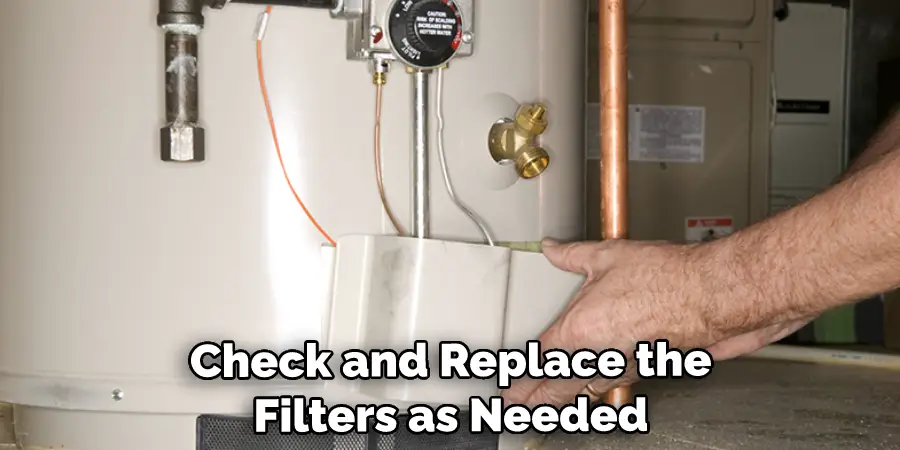
How Can You Prevent Your Tankless Water Heater From Needing to Be Flushed With Vinegar in the Future?
Once you’ve successfully flushed your tankless water heater with vinegar, it’s a good idea to take preventative steps to avoid doing it again. There are a few things you can do that will help keep the buildup in your tankless water heater from becoming an issue:
- Install a Water Softener: A water softener can help reduce the amount of mineral buildup in your tankless water heater by filtering out minerals and another sediment.
- Increase the Temperature Setting: The higher the temperature you set your tankless water heater at, the less likely it will be to build up mineral deposits. Be sure to consult your owner’s manual for details about how to adjust the temperature.
- Flush It Out Regularly: By flushing your tankless water heater with vinegar every 6 months or so, you’ll keep it running in peak condition and help prevent mineral buildup from becoming a problem.
By following these simple steps, you can keep your tankless water heater running reliably and help avoid the need for future flushing. If you ever experience a decrease in water temperature, or if your tankless water heater fails to heat up at all, it may be time to flush it out with vinegar.
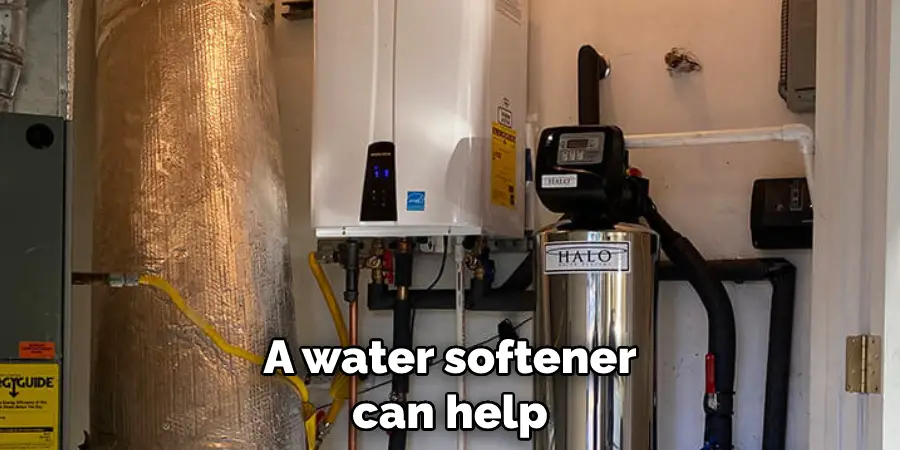
How Long Does It Take to Flush a Tankless Water Heater With Vinegar?
Flushing your tankless water heater with vinegar is a relatively simple process that can take anywhere from one to five hours, depending on the amount of mineral buildup in your system. Generally speaking, the more mineral buildup present, the longer it will take to flush out the system. During the flushing process, you should be sure to keep an eye on the system, watching for any signs of leakage. Start by preparing a mixture of 50% vinegar and 50% distilled water. Before you begin flushing the tankless heater, it is important to ensure that all power to the unit is off. This can be done by turning off the breaker in your home’s electrical panel or simply unplugging the unit.
Once the power is off, open the cold water inlet valve and attach a garden hose to the drain outlet of your tankless water heater. Place one end of the hose into either a bucket or an outdoor drain. Now, begin slowly pouring the vinegar mixture into the cold water inlet valve until it reaches the top of the unit. Allow this to sit for 30 minutes, then turn on the cold water valve and allow the vinegar mixture to flush out until all traces are gone.
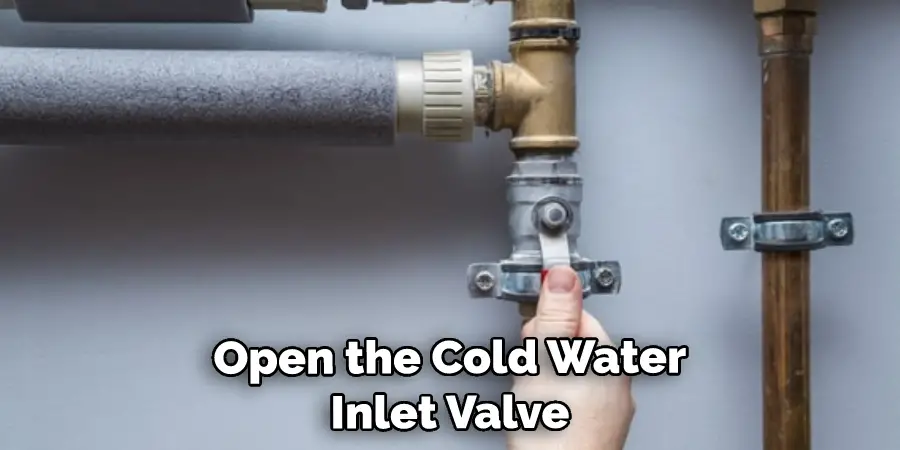
Conclusion
The primary disadvantage of flushing a tankless water heater with vinegar is the amount of time and effort it takes. The process requires multiple steps, such as draining the water, removing sediment from the tank, replacing any corroded parts, and refilling the system. Additionally, this type of maintenance can be costly if professional help is required. Also, depending on the age of the system and its condition, vinegar flushing may not be sufficient to clean the system thoroughly.
In conclusion, knowing to flush a tankless water heater with vinegar is an important task that helps maintain the efficiency and longevity of your unit. Begin by shutting off all power sources connected to your tankless water heater, then disconnect any hoses or pipes. Next, add one gallon of white vinegar into the cold-water line, turn on the hot water outlet, and allow it to run for five minutes.
Once the process is complete, turn off the hot water outlet and switch on the cold water inlet. Let the unit flush out for another five minutes before switching off both outlets once again. I hope this article has been beneficial for learning how to flush a tankless water heater with vinegar. Make Sure the precautionary measures are followed chronologically.

